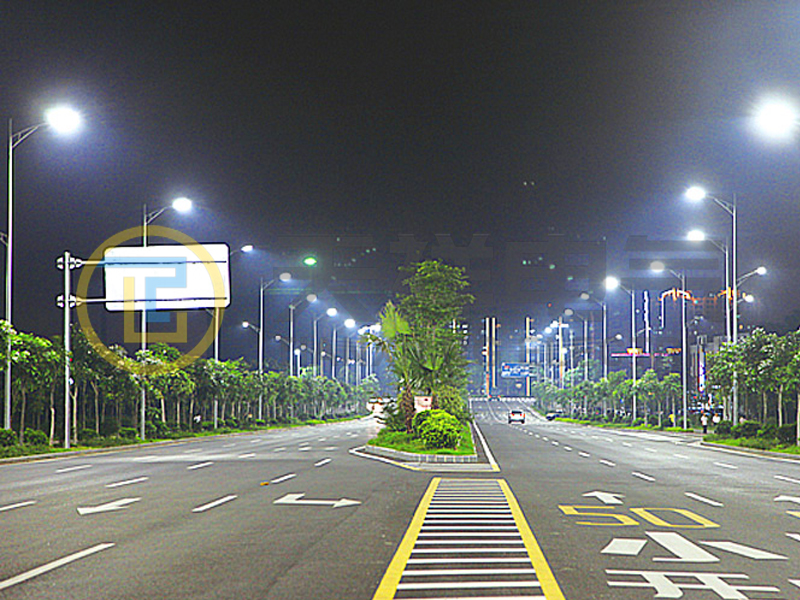Road lighting plays a vital role in ensuring the safety and efficiency of transportation systems. As cities expand in size and traffic volume increases, the need for effective road lighting becomes more apparent. However, the implementation of road lighting involves more than just installing lamps; It involves compliance with established road lighting standards that guide the design, installation and maintenance of these systems. This article takes an in-depth look at the importance of road lighting, the standards governing road lighting, and the impact these standards have on public safety and urban planning.
Importance of road lighting
Road lighting has several basic functions. First, it improves visibility for drivers, pedestrians and cyclists, reducing the likelihood of accidents at night or in low-light conditions. Properly lit roads can significantly reduce the incidence of collisions, making streets safer for all users. Additionally, effective lighting can deter crime because well-lit areas are less attractive to potential criminals.
Additionally, road lighting contributes to the overall aesthetics of urban environments. Well-designed lighting can highlight architectural features, enhance the ambience of public spaces and create a sense of community. As cities strive to become more livable and attractive, the role of street lighting in urban design cannot be ignored.
Roadway Lighting Standards: Overview
To ensure that road lighting is effective and safe, organizations such as the Illuminating Engineering Society (IES) and the American Association of State Highway and Transportation Officials (AASHTO) develop standards. These standards provide guidance on many aspects of road lighting, including:
1. Illumination Level:
The standard specifies the minimum illumination level required for different types of roads. For example, a highway may require higher illumination levels than a residential street. The goal is to provide the driver with adequate visibility while minimizing glare.
2. Uniformity:
Uniformity refers to the even distribution of light on the road. The standard specifies an acceptable ratio of average to minimum illuminance to ensure there are no spots that are too dark or too bright, which would confuse the driver and increase the risk of an accident.
3. Color Temperature:
The color temperature of road lighting affects visibility and perception. Standards often recommend specific color temperatures to enhance contrast and improve visibility without causing driver discomfort.
4. Light Fixture Placement and Height:
The placement and height of lighting fixtures are critical to achieving optimal lighting. The standard provides guidance on pole spacing and luminaire height to ensure effective distribution of light on the road.
5. Energy Efficiency:
As people become increasingly concerned about energy consumption and environmental impact, standards increasingly emphasize the importance of energy-saving lighting solutions. These include the use of LED technology, which has a longer lifespan and lower energy consumption than traditional lighting options.
Impact of road lighting standards
Compliance with road lighting standards has profound implications for public safety, urban planning and environmental sustainability.
Strengthen public safety
By following established standards, municipalities can create safer roads that reduce the risk of accidents. Properly lit streets allow drivers to see potential hazards, such as pedestrians, cyclists and road signs, in advance. This proactive approach to safety can significantly reduce nighttime accidents, ultimately saving lives and reducing injuries.
Support urban planning
Road lighting standards also play a vital role in urban planning. As cities grow and develop, planners must consider how lighting fits into the overall design of public spaces. Effective lighting can improve the usability of parks, sidewalks and public transportation areas, encouraging more people to participate in community activities. Additionally, well-lit areas can increase property values and attract businesses, thereby promoting economic growth.
Promote environmentally sustainable development
In an era when sustainability is a priority, road lighting standards continue to evolve to promote energy-saving solutions. The switch to LED lighting not only reduces energy consumption, but also reduces maintenance costs since these fixtures last longer. Additionally, standards that encourage the use of smart lighting technologies, such as adaptive lighting that adjusts to traffic conditions, could further improve energy efficiency and reduce light pollution.
Challenges in implementing road lighting standards
Despite the clear benefits of complying with road lighting standards, implementation challenges remain. Budget constraints may limit municipalities’ ability to invest in high-quality lighting systems. Additionally, the rapid pace of technological advancement means standards must continue to evolve to keep up with new lighting solutions and practices.
Additionally, local governments and contractors often lack awareness or understanding of these standards. Education and training are essential to ensure that those responsible for designing and installing roadway lighting systems are proficient in the latest standards and best practices.
In conclusion
Road lighting is an important component of a safe and efficient transportation system. By complying with established road lighting standards, municipalities can enhance public safety, support urban planning efforts and promote environmental sustainability. As cities continue to grow and evolve, the importance of effective street lighting will only grow. Stakeholders must prioritize implementing these standards to create safer, more vibrant communities for all.
Post time: Oct-25-2024





